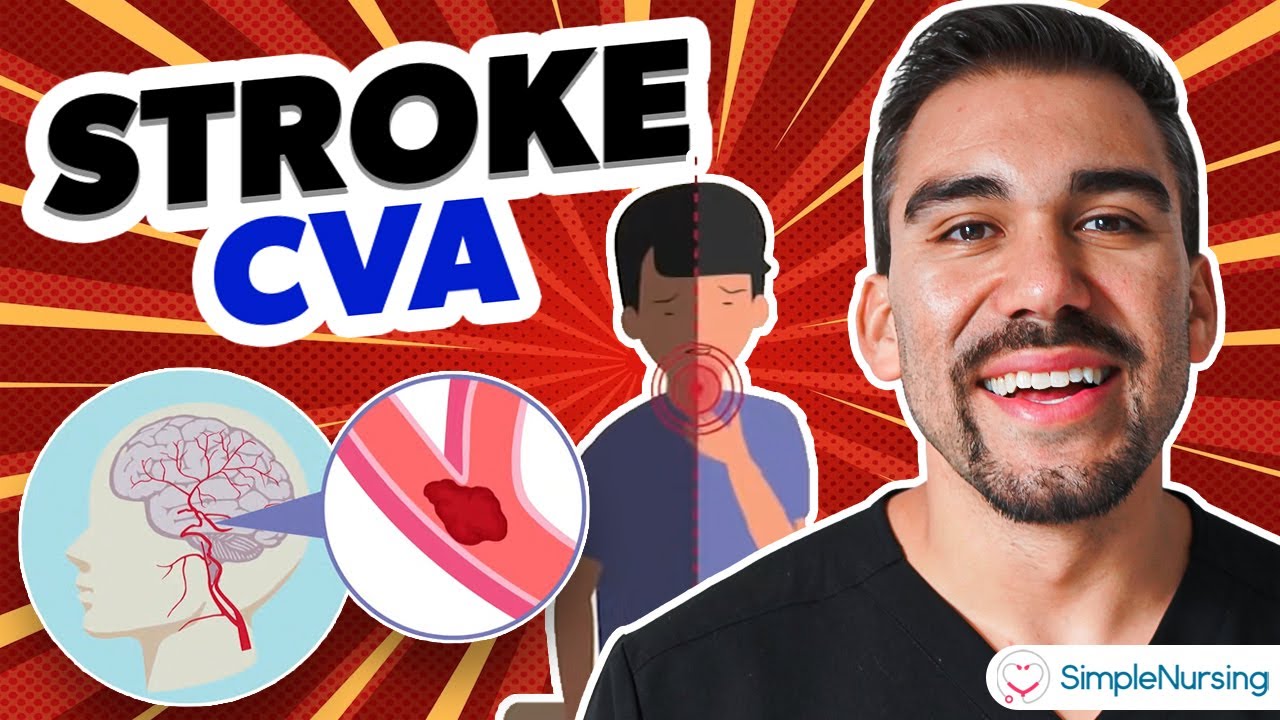What happens during a stroke? - Vaibhav Goswami
Summary
TLDRStrokes occur every two seconds globally and affect one in six people, often leading to death or disability. Quick medical care is crucial to prevent permanent brain damage. Strokes can be hemorrhagic or ischemic, the latter being more common due to clots blocking blood flow. Symptoms include slurred speech, muscle weakness, and facial drooping. Immediate treatment options include Tissue Plasminogen Activator and endovascular thrombectomy. Recognizing stroke signs with the FAST test (Face, Arms, Speech, Time) and calling emergency services promptly can save lives.
Takeaways
- 🌐 Strokes are extremely common, affecting someone every two seconds globally.
- 👤 One in six people will experience a stroke in their lifetime.
- 🧠 Strokes are a major cause of death and preventable disability.
- 🏥 Quick medical care during a stroke is crucial to avoid permanent brain damage.
- 🚨 Strokes occur when blood flow to the brain is interrupted, either by a hemorrhagic stroke (blood leak) or an ischemic stroke (blood clot).
- 🔍 The brain, despite being only 2% of body mass, uses over 20% of the body's oxygen, delivered through arteries.
- 🩸 Hemorrhagic strokes involve blood leaking from a perforated vessel, while ischemic strokes are caused by a clot blocking a vessel.
- 💔 Clots can originate from a change in heart rhythm, leading to an embolism that cuts off oxygen supply to brain cells.
- 💊 The first line of treatment for strokes is Tissue Plasminogen Activator (tPA), which can break up blood clots if administered quickly.
- 🔬 If tPA cannot be used, endovascular thrombectomy is an alternative procedure to remove the clot.
- 🚑 Recognizing stroke symptoms quickly is vital, using the FAST test: Face drooping, Arm weakness, Speech difficulty, and Time to call emergency services.
Q & A
How frequently do strokes occur globally?
-Every two seconds, someone in the world experiences a stroke.
What is the likelihood of an individual experiencing a stroke in their lifetime?
-One out of every six people will have a stroke at some point in their lives.
What are the consequences of strokes for the brain?
-Strokes deprive brain cells of oxygen and can lead to death or preventable disability.
Why is quick medical care essential during a stroke?
-Quick medical care is critical to avoid permanent brain damage by restoring blood flow to the affected area.
What percentage of the body's oxygen does the brain consume?
-The brain consumes more than 20% of the oxygen in your blood.
How does the oxygen reach the brain?
-Oxygen is carried to the brain through a system of arteries, including the carotid and vertebral arteries.
What are the two main types of strokes?
-The two main types of strokes are hemorrhagic strokes, where a vessel leaks blood, and ischemic strokes, caused by a clot blocking blood flow.
How do clots that cause ischemic strokes typically form?
-Clots can form when a sudden change in heart rhythm slows down blood flow, allowing platelets and clotting factors to stick together and form an embolism.
What immediate symptoms might indicate a stroke affecting speech or muscle movement?
-Slurred speech or weakness, often just on one side of the body, can indicate a stroke affecting the brain's language area or muscle control.
What is the first line of treatment for stroke victims?
-The first line of treatment is an intravenous medication called Tissue Plasminogen Activator (tPA), which can break up the blood clot and restore blood flow.
What procedure is performed if Tissue Plasminogen Activator cannot be given?
-If tPA cannot be given, doctors can perform an endovascular thrombectomy, a procedure that physically removes the clot using a catheter and retriever.
What is the FAST test and why is it important?
-The FAST test is a method to quickly identify potential stroke symptoms: Face drooping, Arm weakness, Speech difficulty. It's important because it helps to recognize a stroke and seek immediate medical help.
Outlines

This section is available to paid users only. Please upgrade to access this part.
Upgrade NowMindmap

This section is available to paid users only. Please upgrade to access this part.
Upgrade NowKeywords

This section is available to paid users only. Please upgrade to access this part.
Upgrade NowHighlights

This section is available to paid users only. Please upgrade to access this part.
Upgrade NowTranscripts

This section is available to paid users only. Please upgrade to access this part.
Upgrade NowBrowse More Related Video

Cara Mudah Beradaptasi dengan Lingkungan Baru

Stroke CVA (Cerebrovascular Accident) Hemorrhagic, Ischemic NCLEX RN & LPN NURSING

Diabetes by the Numbers Infographic

What happens during a heart attack? - Krishna Sudhir

C Fenomena dan Keterkaitan Sistem Saraf dengan Sistem Gerak Manusia

Congressional ELECTIONS [AP Gov Review, Unit 5 Topic 9 (5.9)]
5.0 / 5 (0 votes)